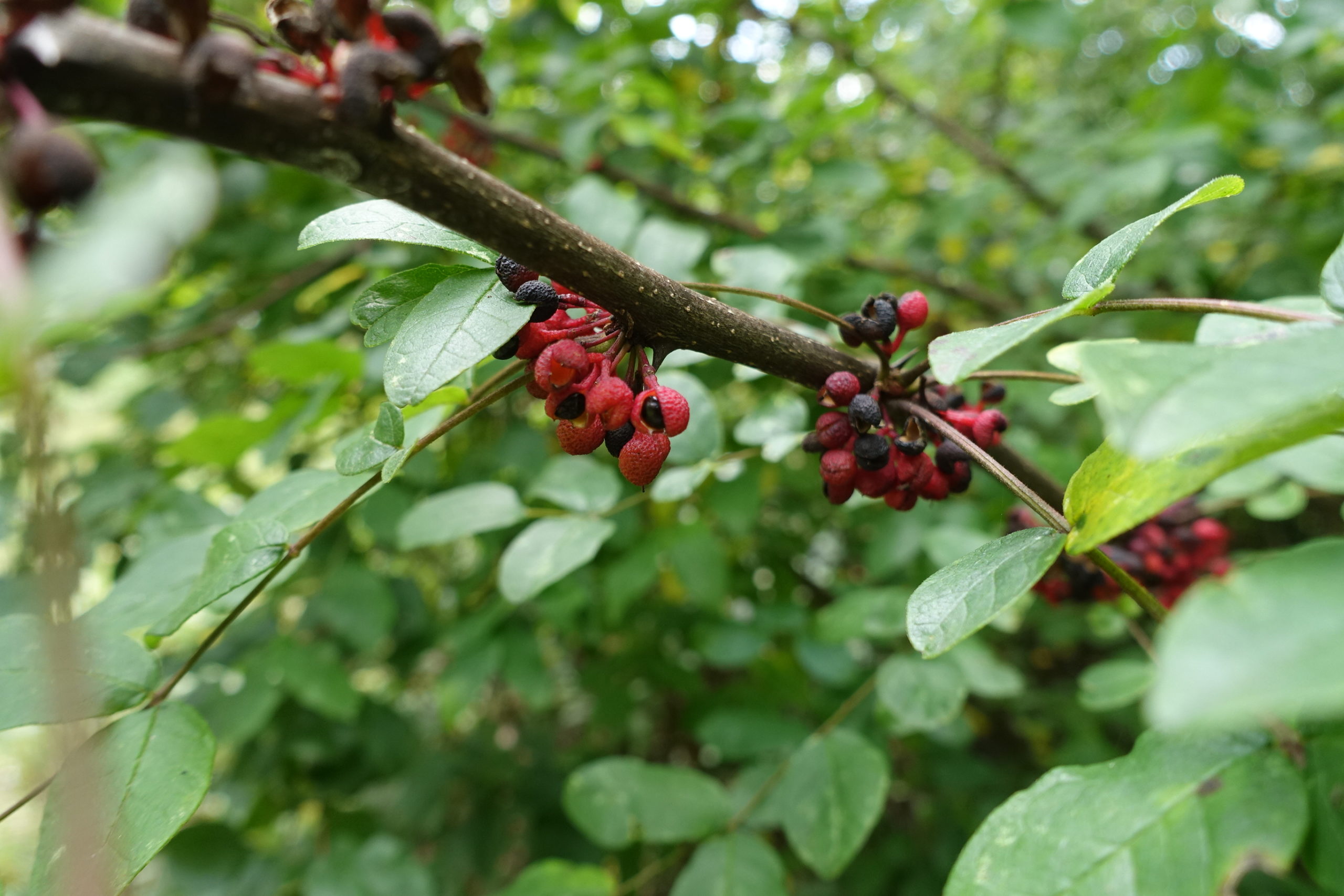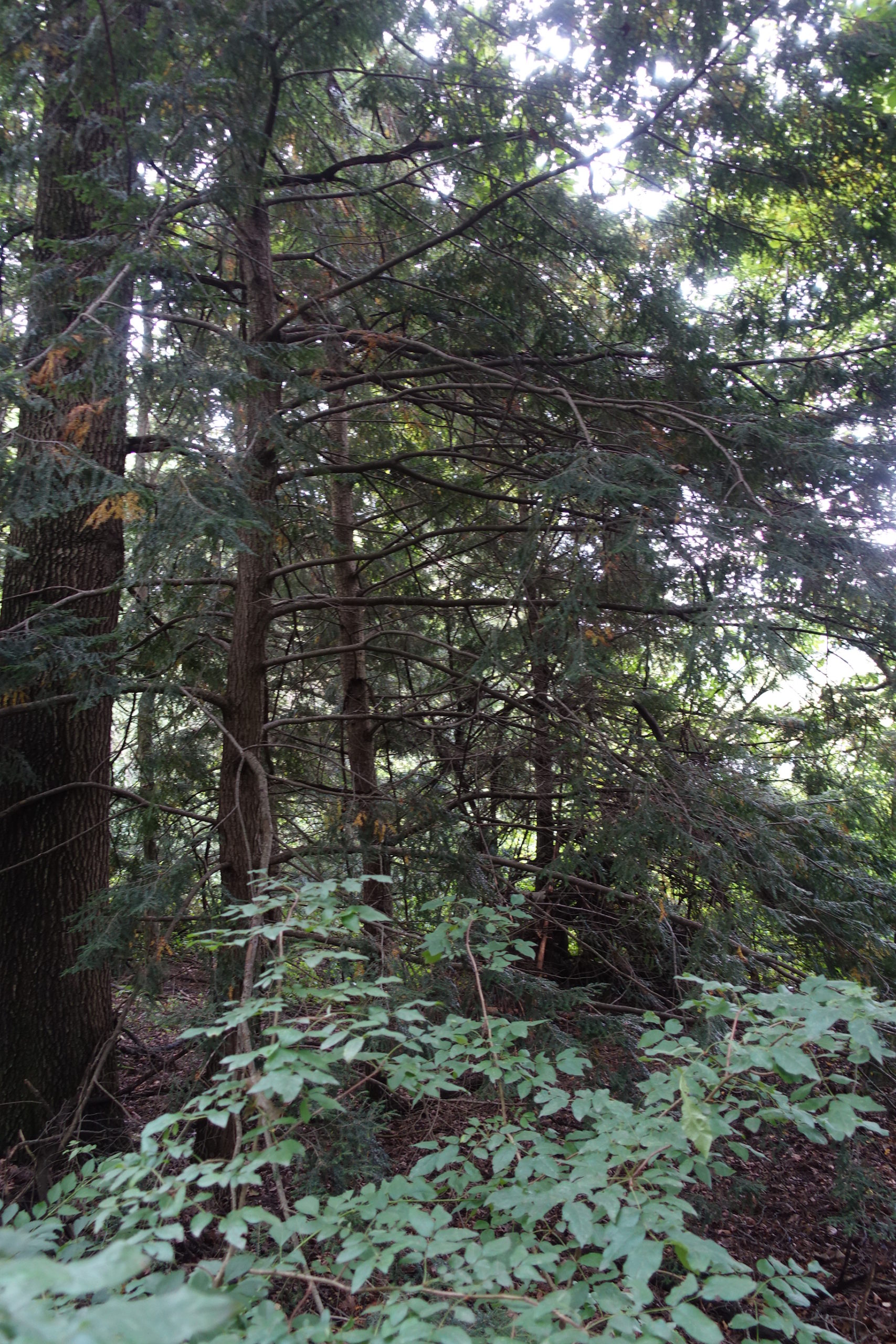As a team member of the first plant-collecting expedition of 2017 for the Campaign for the Living Collections, I am pleased to write that our trip to southeastern Wisconsin has been incredibly fruitful so far! Manager of Plant Records Kyle Port and I were granted permission to collect seed, saplings, and cuttings at several Nature Conservancy locations and at Devil’s Lake State Park, so we hit the ground running.
The day we arrived, we stopped at Chiwaukee Prairie in the extreme southeast corner of Wisconsin, bordered by Illinois and Lake Michigan. We were surprised to find the prairie cropped to soybean, so we looked among hedgerows for our two target Malus (apple) species: Malus coronaria (sweet crab) and M. ioensis (prairie crab). We were tremendously hopeful of finding sweet crab in this location, as herbaria vouchers and references suggest that the populations in southeastern Wisconsin are the only ones in the state. Just when we heading back for the day–stomachs growling, fed up with pesky mosquitos, and without any collections under our belt–we found our first target taxon—Jugans nigra (black walnut)! We made good use of the pole pruner to remove the spicy aromatic green fruits from two individuals. We found our second collection of black walnut soon thereafter at the edge of the prairie bordering a run-down gas station. I actually stood on an old tire for a boost in reaching the large nuts!
On the second day, Kyle and I visited Lulu Lake Preserve, which is about an hour northwest of Chiwaukee Prairie, in Walworth County. This Preserve sits on an almost a 100-acre kettle lake and encompasses both prairie and wetland. As we were approaching a small creek, Kyle spotted several mature Larix larcinia (eastern larch) specimens growing at the water’s edge! It was truly a majestic sight, and we carefully made our way across a low-lying area to gather cones and obtain a GPS coordinate.


Continuing on, we discovered two large fallen Quercus (oak) spp. – Quercus coccinea (scarlet oak) and Q. macrocarpa (bur oak) blocking the trail. Although this made crossing the trail somewhat arduous, we turned lemons into lemonade and harvested copious acorns from the downed crowns of both trees. A collection of Corylus americana (American hazelnut), a spreading shrub, followed, along with Tilia americana (American linden). American linden was a dominant species at Lulu Lake, and after coming across a specimen that was dripping with fruit, Kyle and I could not pass up gathering it.

After hiking around Lulu Lake for more than half of the day, we decided to go on a pointed collection—the quest for sweet crab was on! Kyle and I drove to a GPS coordinate in Racine County. We parked in a farm stand lot and hiked along railroad tracks, then slowly through a slick (it rained during our drive), steep and very thorny thicket, and ended up in a cornfield where the corn was much, much taller than us! Our first disheartening impression was that we had come all the way for nothing, as the sweet crab was no longer at that coordinate. However, persistence prevailed, and after walking the hedgerow of a bordering hay field for 20 minutes, we were victorious. Kyle and I cheered as we saw two specimens of sweet crab! We distinguished it from other native apple species by its doubly serrate leaves and glabrous petioles and pedicels. We used the pole pruner to collect a dozen or so green fruits. Despite being exhausted, covered in mud, and scraped up, we were overjoyed as we made the 45-minute trek back to the car.
The following day brought us to Crooked Creek Preserve in Walworth County, which consists of ridges, kettle lakes, and wetland areas, and harbors the headwaters of the Mukwonago River. Soon after starting on hike, Kyle spied Zanthoxylum americanum (prickly ash), a spreading shrub with thorny stems. Most of the bright citric-scented follicles had already opened and dehisced their black seeds, but we were able to find several dozen still intact.

While enjoying lunch at an overlook further down the trail, we found our second Crooked Creek collection—a grand Pinus resinosa (red pine). We braved the rocky slope to collect cones and obtain a herbarium specimen. As we went down in elevation, I discovered a small grouping of another target taxon—Tsuga canadensis (eastern hemlock) growing along a pond. We garnered many pendulous cones from the majestic trees in the hope of having successful seed germination back at the Dana Greenhouses.

Tomorrow morning, we head up to the Baraboo Hills. Stay tuned for the sequel to this post as we make our way across Wisconsin!
From “free” to “friend”…
Established in 1911 as the Bulletin of Popular Information, Arnoldia has long been a definitive forum for conversations about temperate woody plants and their landscapes. In 2022, we rolled out a new vision for the magazine as a vigorous forum for tales of plant exploration, behind-the-scenes glimpses of botanical research, and deep dives into the history of gardens, landscapes, and science. The new Arnoldia includes poetry, visual art, and literary essays, following the human imagination wherever it entangles with trees.
It takes resources to gather and nurture these new voices, and we depend on the support of our member-subscribers to make it possible. But membership means more: by becoming a member of the Arnold Arboretum, you help to keep our collection vibrant and our research and educational mission active. Through the pages of Arnoldia, you can take part in the life of this free-to-all landscape whether you live next door or an ocean away.
